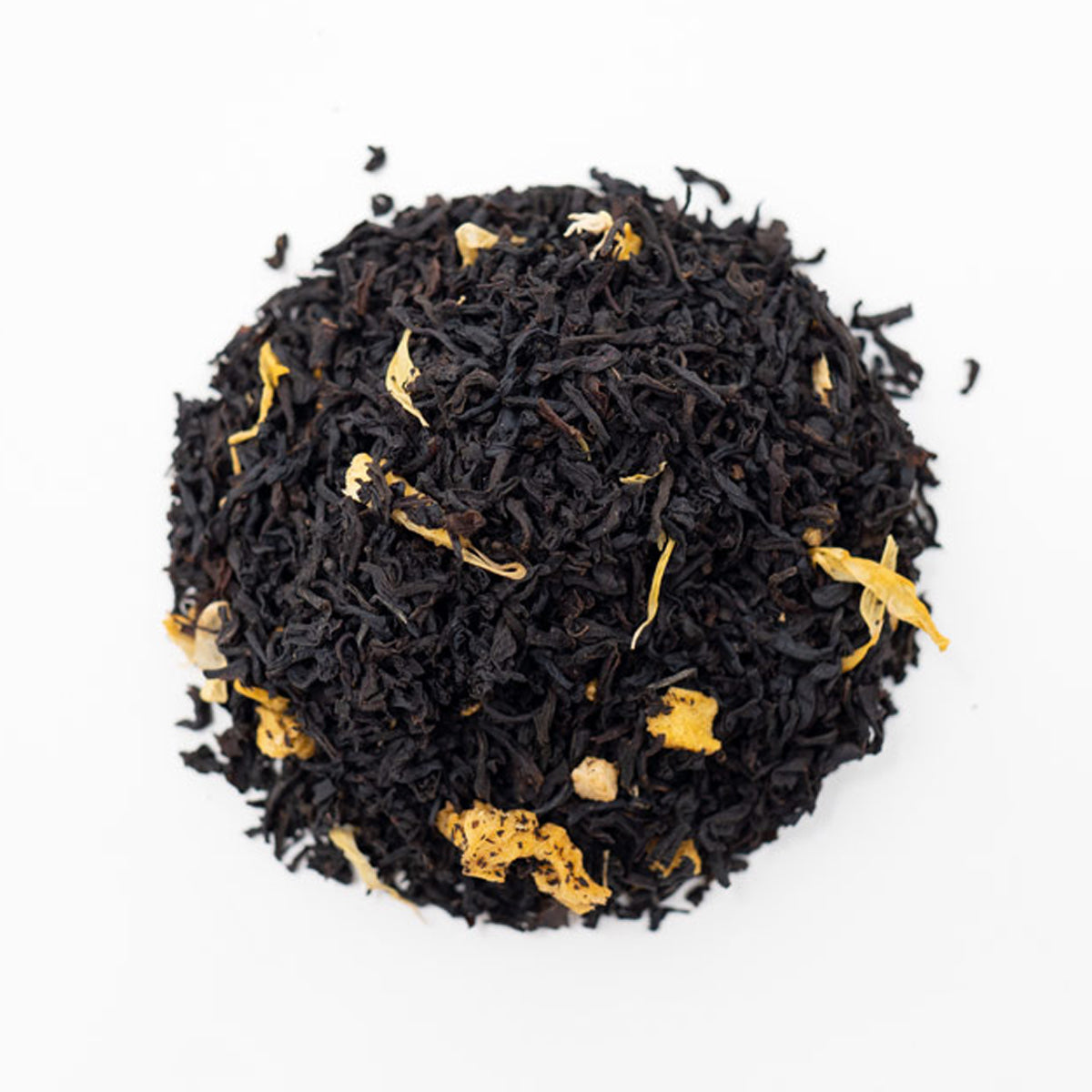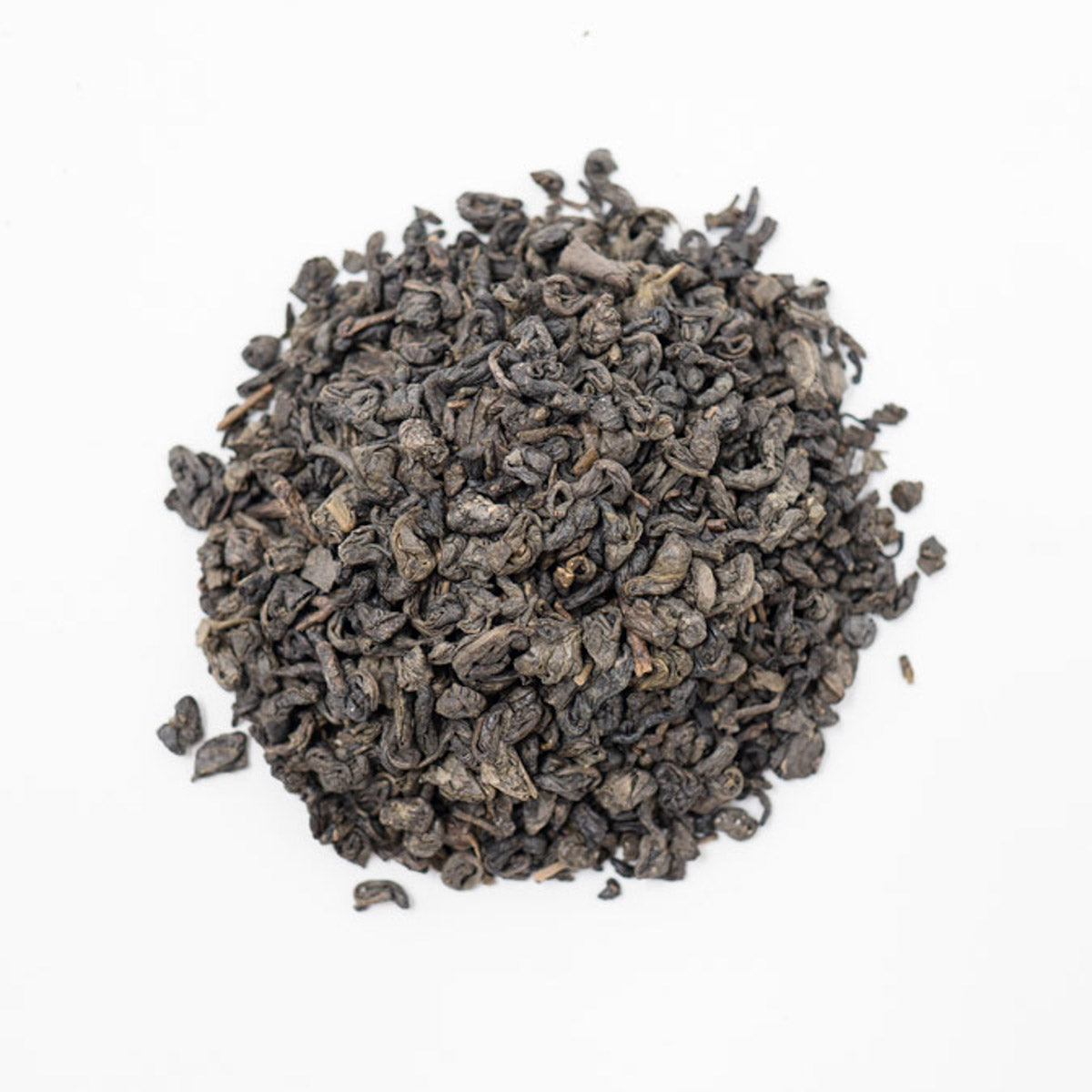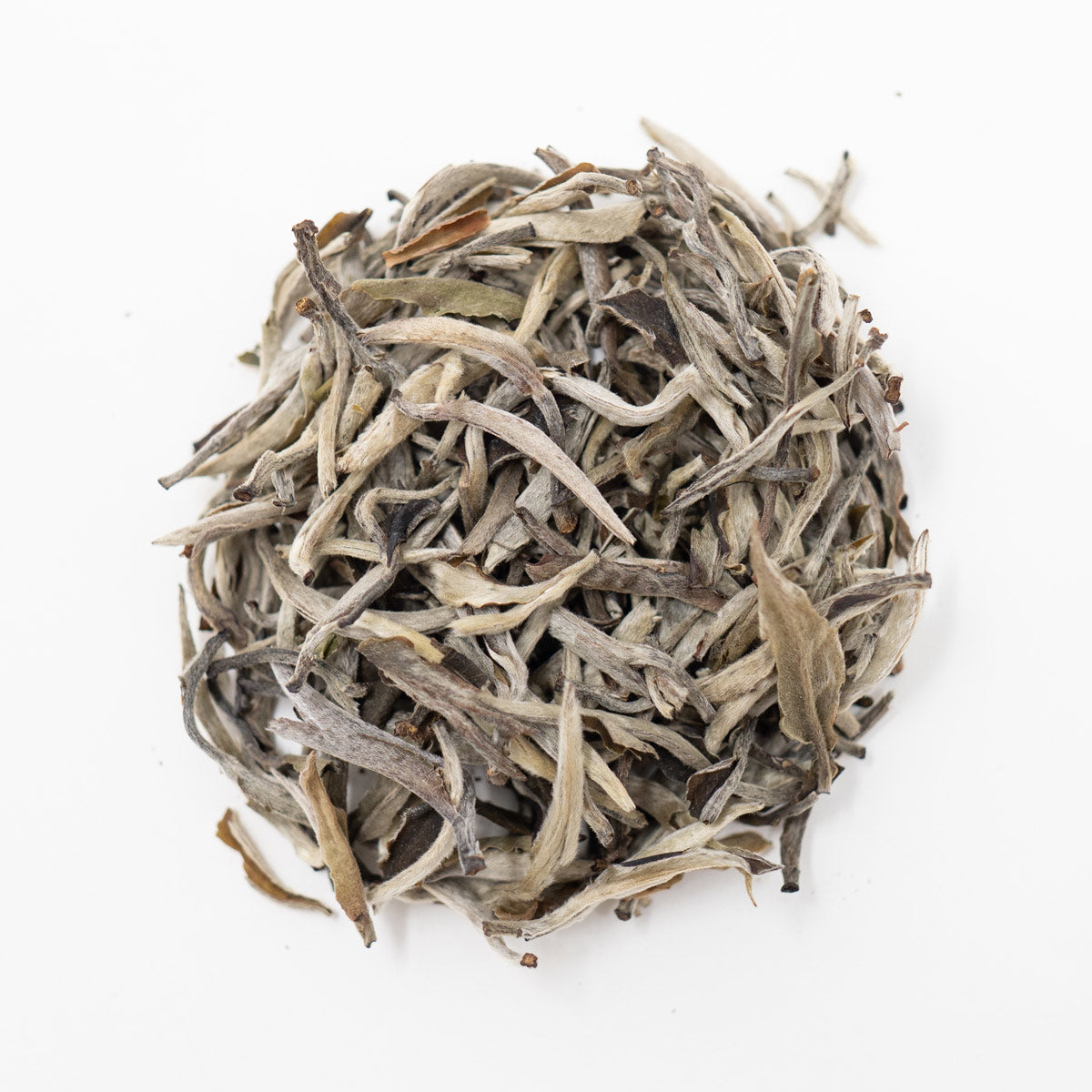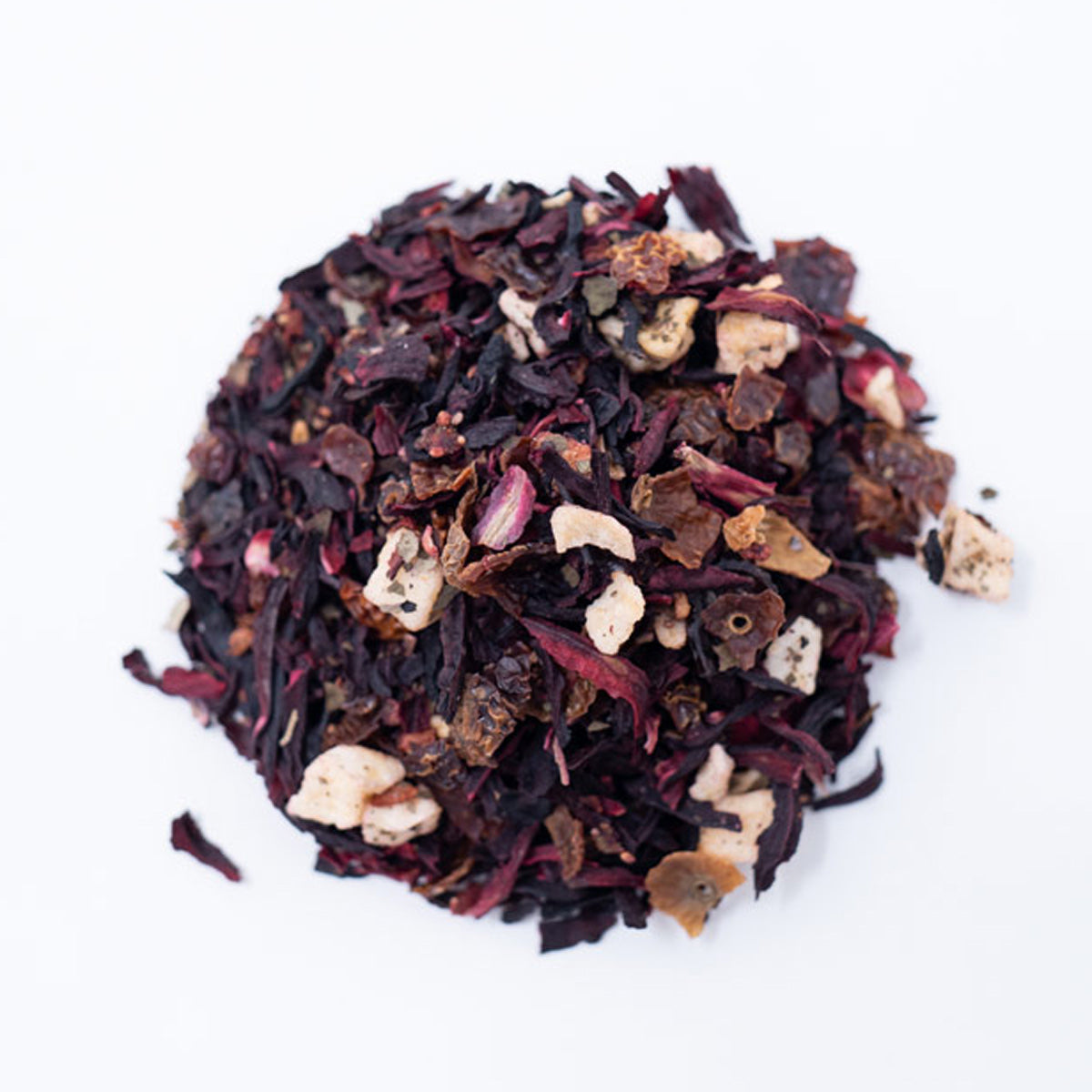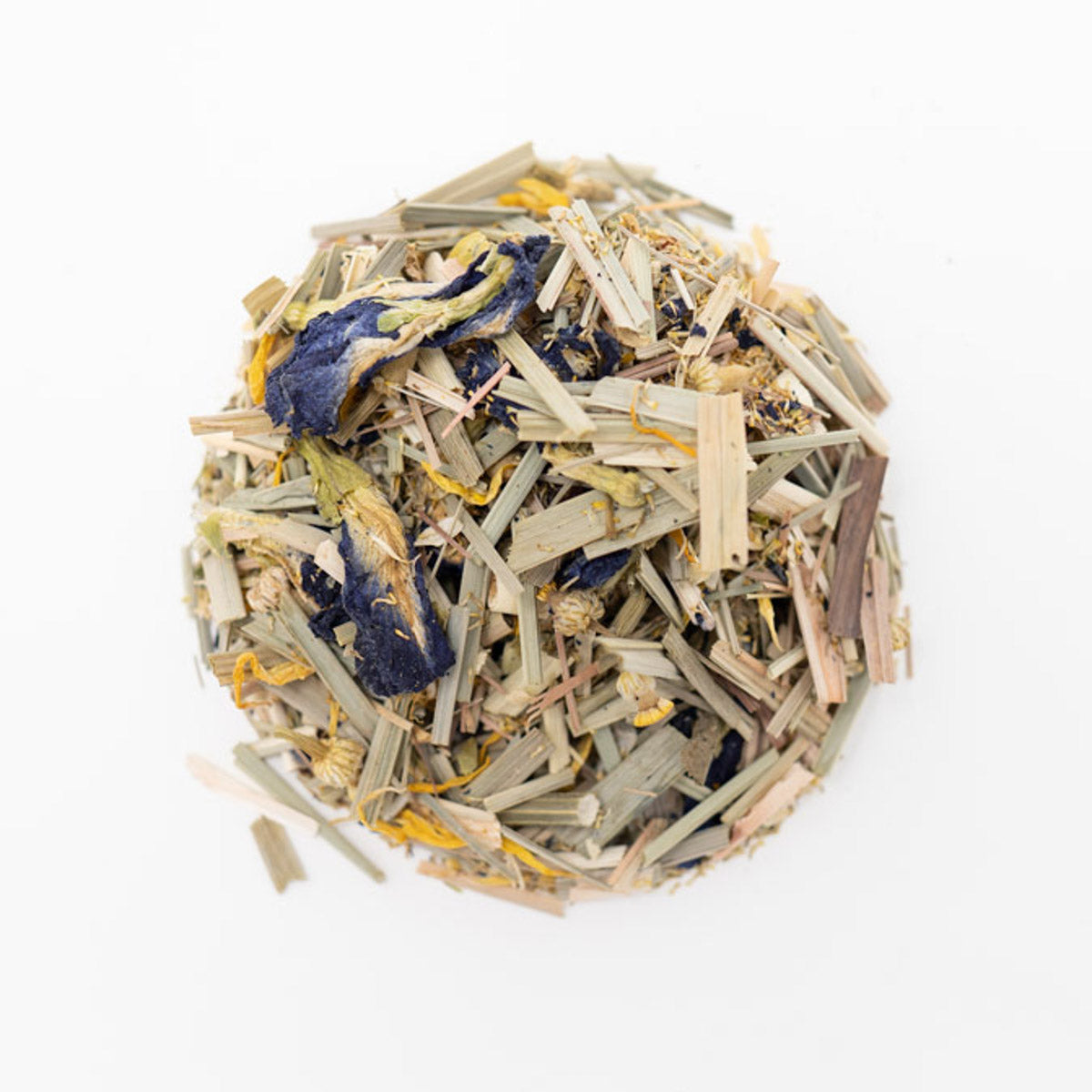Honeybush Tea 101 | History and Processing
History
Honeybush comes from the Cyclopia plant. It's a flowering plant closely related to the Rooibos plant, but it's not the same thing. The flower is pretty yellow and grows only on the coast and mountains of the Western and Eastern Cape regions of South Africa. There are more than 20 species of the plant, but only a few are harvested for distributing tea commercially. It gets its name from the yellow flower that smells like honey. The honey aroma is also present while the tea is processed. Honeybush is sweeter than Rooibos, and both are caffeine-free.
Harvesting is usually a manual process because Honeybush leaves grow in higher elevations where transport into farms may become difficult. Workers hike up in the hills, cut down the stems and leaves, wrap them securely in bundles, and then strap the bundles to their backs to carry them back down the hills. The ideal harvest time is while the plant is flowering, but some farmers may harvest more often depending on demand. Younger plants are ideal for harvest because they are not as coarse as older plants, and the stem is not as thick. Once the plant has aged too much, the branch becomes harder to cut, so processors prefer to harvest younger flowering plants.
Honeybush Processing
Processing Honeybush is a labor-intensive endeavor: growing, fermenting, oxidizing, cutting, and sieving. All that happens before packaging and transporting. Most tea in circulation today does not go through the fermentation process; it's harvested, then oxidized, and done. To process Honeybush, the leaves must go through a series of steps, some of which require a lot of labor, meticulous measurement, and constant monitoring. When Honeybush is processed, it has a sweet honey-like flavor unique only to Honeybush.
After harvesting, the next stage is cutting. Cutting leaves to the ideal size helps the fermentation process and helps to create a consistently sized product. Once leaves are cut, they are ready for fermentation. The fermentation process may vary.
Fermentation is often confused with oxidation. Terms are often used interchangeably, but they are two independent processes. Oxidation is the exposure of tea to sunlight and then drying with heat to stop the oxidation process. Black and green teas come from the Camellia sinensis plant and undergo oxidation. The longer the leaves are exposed to sunlight, the darker the leaf, which is the process of oxidation. Black tea is the most oxidized tea, and white tea is the least. Not all tea is fermented. The only time tea from the Camellia sinensis plant is fermented is when Pu-erh tea is processed. Fermentation adds another layer of complexity. It encourages microbial activity that will affect the flavor. Because it requires a perfect balance of temperature, humidity, and motion, the labor it takes for an ideal product is a lot harder. The main two ways of fermenting Honeybush tea are using fermentation tanks, also called a baking oven, and heap fermentation.
Fermentation is a highly controlled process that encourages the development of microbes to enhance flavor. Once Honeybush leaves are cut, they are placed in fermentation tanks which may also be called ovens. Fermentation tanks allow for the monitoring of humidity and temperature to make sure the environment is perfect. Tea will ferment for approximately 60 hours. The tank is rotated several times a day to ensure that leaves have contact with oxygen while they ferment. The fermentation cycle is much shorter than the fermentation process of Pu-erh tea. Pu-erh tea may sometimes be fermented for weeks and up to months. Water is usually added to the fermentation process for Pu-erh, while no other ingredients are added to Honeybush before, during, or after the fermentation. After 60 hours of fermentation, leaves are removed from tanks to oxidize on drying beds in or in climate-controlled greenhouses. The benefit of a greenhouse is it's easier to control the climate, and changes in weather won't affect the harvest. Greenhouses perfect for Honeybush processing are not often used, and processors have to dry tea outside, making the process more unpredictable. Fully fermented leaves start with a green leafy color and change to a more reddish color.
With heap fermentation, the monitoring process is more manual than with tanks and is more commonly used for large-sized harvests. Leaves are piled in a heap, packed firmly, and covered with canvas material for three to five days. As the leaves ferment, they release a sweet honey-like aroma which is how Honeybush got its name. Once the fermentation is done, leaves are set out to dry outside in direct sunlight to complete the oxidation process.
Honeybush tea is just like all the other tea in distribution today when it comes to oxidation. Just like green and black tea, it's set out to dry to oxidate. When oxygen comes in contact with tea leaves, they darken. Once the ideal oxidation level is reached, the oxidation process is done, and the tea can move on to the next stage of processing. Our blog Fermentation vs. Oxidation provides more detail on the process overall and how it affects the categorization of tea.
The final step is sieving, or it could also be straining. Since Honeybush is course, if there are any larger than ideal pieces, those need to be separated from the smaller tea parts of the tea. A strainer-like tool is used to ensure that only the perfectly sized tea leaves and stems are included in the final product.
